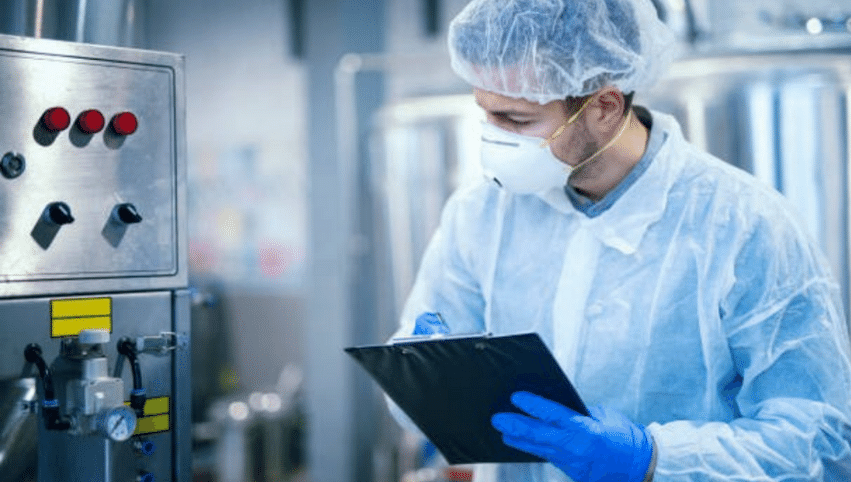First things first, What is HACCP? Hazard analysis and critical control point, or HACCP, focuses on preventing hazards that could cause food-borne illnesses by applying science-based controls from industrial cooking equipment to the finished products. Offering absolute, bullet-proof safety in a workplace is not always achievable, but by implementing a HACCP plan in your food production business, you are ensuring you’re as close as you can be. This is why we’ve broken down the 7 key steps of how to implement HACCP in the food industry.
A HACCP system can be implemented by members of your workforce if clear steps are taken, or you can call in a HACCP expert.
Overview:
- Undertake a hazard analysis
- Implement critical control points
- Set critical limits
- Set critical control monitoring expectations
- Create rules for corrective action
- Develop unique procedures
- Maintain exceptional records
What are the 7 steps for HACCP?
1. Conduct a hazard analysis
The first step of implementing the HACCP in the workplace is to undertake a hazard analysis of the environment. Hazards, in this context, are potential safety concerns that could occur at any stage of your food processing production process – and they may be physical, biological or chemical hazards. Once these hazards have been identified, you can then proceed to implement HACCP in the food industry.
2. Implement critical control points
A critical control point (CPP) is a point in the process that can be applied during the food manufacturing process to control the likelihood of potential risks.
In order to be functional, CCPs must be meticulously developed and documented. Additionally, the control points must be specific to their environment – different facilities preparing similar food items can have vastly different hazards. This may be because of differences in equipment, layout or even ingredients, which is why the CCPS cannot be applied broadly.
A CCP can also monitor an individual parameter. For example, ensuring that all potential allergens are labelled on a food or that the garbage bins are cleaned and sanitised weekly.
3. Set critical limits
Critical limits are the parameters that are set on the critical control points. For example, if there are allergens you need to consider in your food production environment, what are the maximum detectable limits allowed for your food to be consumed to the consumer? By having clear, measurable limits your business is able to safely manage potential hazards and implement appropriate food safety technology.
4. Set critical control monitoring expectations
Monitoring the CCP is as important as defining the limits, it’s essential in ensuring that hazards remain contained. The ways that CCPs are monitored will vary, however, whatever method is implemented must provide real-time data. Some examples are:
- X-Ray Food Inspection – checking for contaminants and foreign objects such as glass or metal
- Implementing food quality assurance systems
- Logging food hygiene activities such as cleaning and maintenance
5. Create rules for corrective action
If a breach is detected while you are monitoring the critical control limits, there must be a clear course of action. The actions that are to be taken should be clear and easy to follow. This ensures that no harm comes as a result of this breach in the critical control limit.
Some examples of corrective action are:
- Disposing of food that appears to have been tampered with e.g. breaks in seals
- Sending an employee home if they appear to be ill to stop the spread of any bacteria. Particularly in a post-Covid-19 era this has become more important than ever. Equipment like the NoahFace Thermal Screening Kiosk gives accurate and immediate data keeping your workplace safe and secure.
- Storing food at the appropriate temperature for a specific time to maintain food hygiene eg. meats being transferred into a fridge or freezer that is 5°C or below
6. Develop unique procedures
As we’ve touched on briefly above, the procedures that are implemented must be specific to the business and location in which they are operating. This takes into account the possibility of potential unique hazards, such as building layout or product suppliers.
HACCP was designed to be applied to individual businesses, therefore no one process can be replicated across multiple businesses or locations.
7. Maintain exceptional records
One of the most crucial elements when it comes to how to implement HACCP in the food industry is abiding by robust record keeping. The HACCP principles state that comprehensive, up-to-date records must be kept. Many businesses opt for a live document called the Food Safety Plan. Some examples of records that your business might need to keep could be:
- Temperature charts and logs
- Storage logs
- Cleaning schedules
- Employee qualifications
- Pest control logs
Producing safe food is a high-stakes business, which is why having an effective HACCP plan in place can reassure you that you’re doing everything in your control to keep your business and customers safe. Knowing how to implement HACCP in the food industry is step 1 in ensuring your food is at the quality your customers expect.
Have any more questions about how to implement HACCP in the food industry?
Contact FPE today to learn more about how our food processing equipment can assist you with your HACCP implementation.






